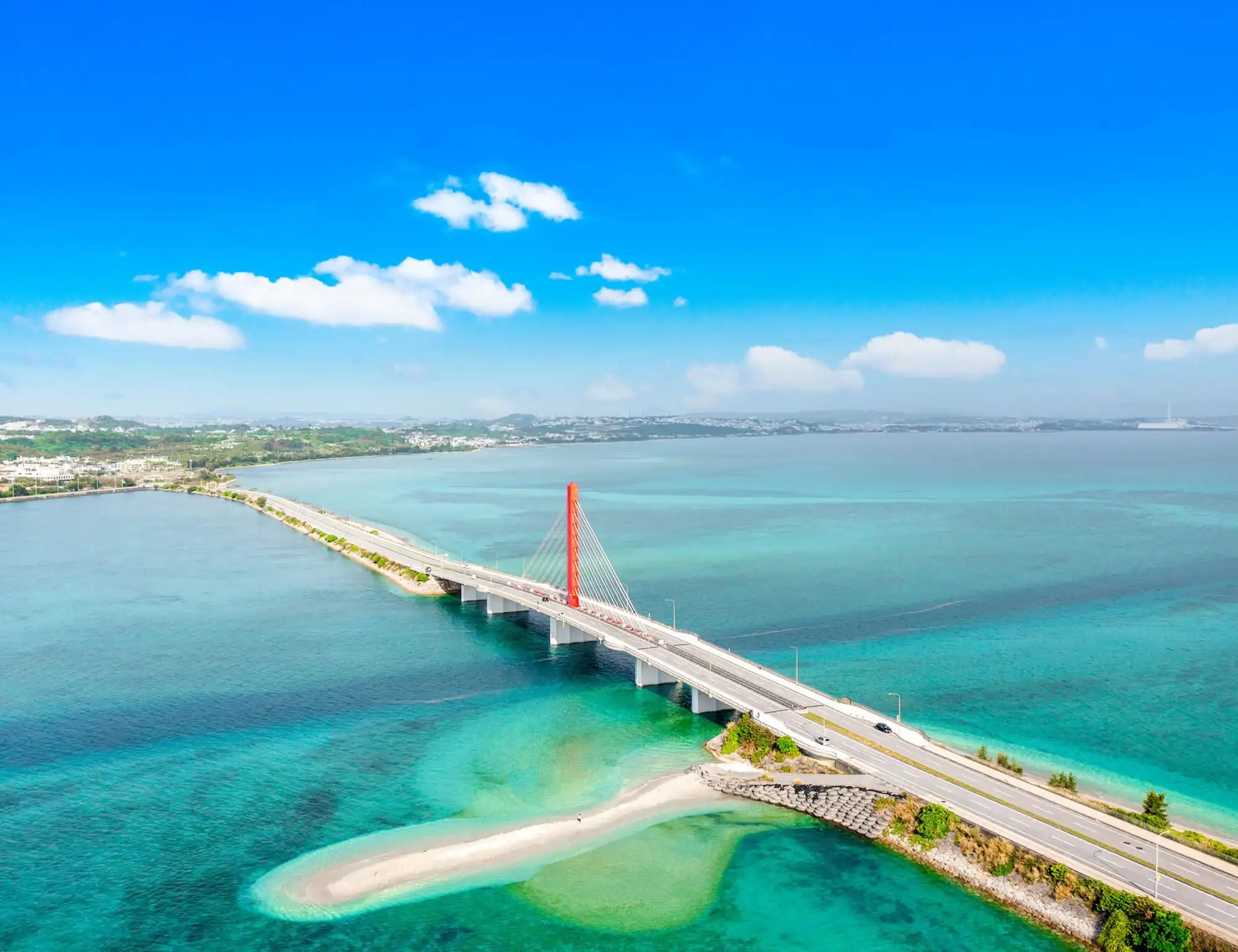Book with Confidence: Enjoy peace of mind — your 20% deposit is fully refundable up to 60 days before departure. See terms & conditions.
Guided Mt. Fuji to Samurai Coast Bike Tour
Shizuoka prefecture is known for two things - Mt. Fuji, and for being the tea heartland of Japan. And for good reason too, as the mesmerizing views of snow-topped Fuji and velvety green tea plantations are ubiquitous in Shizuoka.
However, we've crafted this 8-day road cycling, hiking, and kayaking to go beyond the ubiquitous, blending scenic landscapes, historic sites, and cultural experiences in this unforgettable bike ride through the Izu peninsula.
We start in Shizuoka, cycling past Mt. Fuji and lush green tea fields, before exploring charming towns, visiting ancient shrines, and hiking along the picturesque Shimoda Kaido dotted with beaches.
We experience Japan’s natural beauty with visits to Shiraito Falls, a wasabi farm, and the pristine coastlines of Izu, including Cape Irozaki and Shirahama Beach. It is worth mentioning here that the Izu peninsula, of which Shizuoka is a part, has been recognized by UNESCO as a Global Geopark due to its unique geography and geology found nowhere else.
Enjoy challenging rides, relaxing breaks, and immerse yourself in local culture with craft workshops, a traditional tea ceremony, and a sea kayaking tour.
Conclude with a rejuvenating stay in Shuzenji hot springs and savor the sweet aftertaste of a memorable journey through the heart of Japan.
Guided
casual hotels
Shizuoka
Mishima
moderate to challenging
50 km / 31 mi
6
Min. 4, Max. 14
Narita International Airport (NRT)
Narita International Airport (NRT)
Highlights

Cycling Through Shizuoka and Mt. Fuji Views
Start your adventure cycling through Shizuoka city, past historic sites like Sunpu Castle, and enjoy breathtaking views of Mt. Fuji.

Shimoda Kaido Hike and the Seven Waterfalls
Enjoy a scenic 10 km in the historic port town of Shimoda where Commodore Matthew C. Perry landed with American Naval ships in 1854 to open Japan to American trade. Soak in the history of this port town along with vistas of lush forests and the Kawaza Nanaduru seven waterfalls.
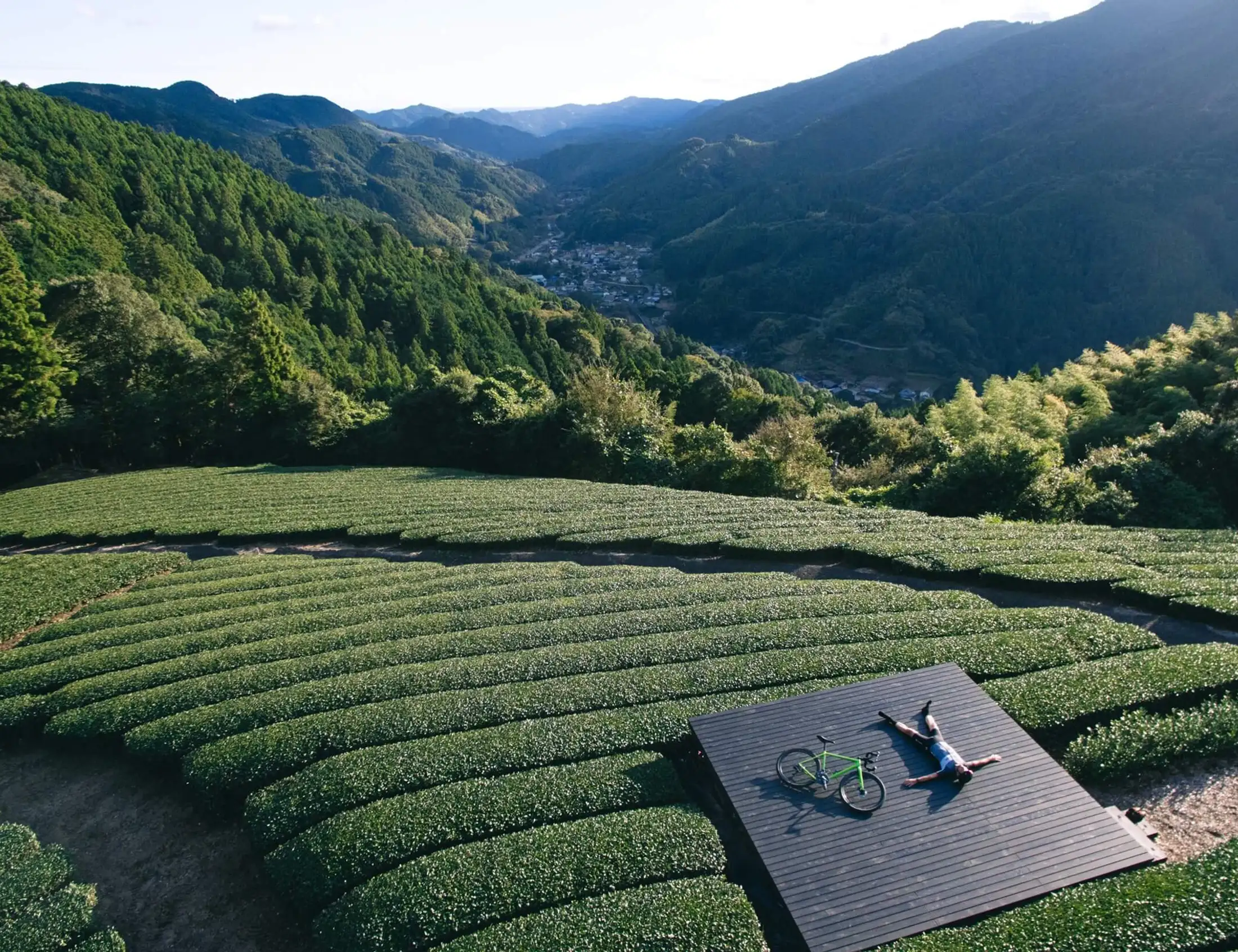
Wasabi Farm Visit and Local Culture
Learn about wasabi cultivation at one of Japan's largest terraced wasabi farms and explore the rich history of the Izu Peninsula through visits to historic sites.

Relish Shizuoka-cha
Shizuoka is the green tea capital of Japan, with over 40% of the country's green tea coming from this region. So much so that tea cultivation and tea consumption are an integral part of the culture of Shizuoka. Taste some of the finest green teas in Japan right from the source!
Itinerary
Brief Itinerary
Meals are indicated as B = Breakfast, L = Lunch, D = Dinner.
Listed hotels are subject to availability and may be replaced with similar alternatives of equal standard.
| Day | Place | casual Inns | Meals | Distance | Activity |
|---|---|---|---|---|---|
| DAY 1 | Shizuoka | Hotel Associa | L, D | 50 km / 31 mi | cycling |
| DAY 2 | Fujinomiya | Kuretake Hotel Fujinomiya | B,L,D | 65 km / 40 mi | cycling |
| DAY 3 | Izu no Kuni | Kona Stay | B,L,D | 85 km / 53 mi | cycling |
| DAY 4 | Izu no Kuni | Kona Stay | B.L,D | 35 km / 22 mi | cycling |
| DAY 5 | Shimoda | Shimoda Tokyu Hotel | B,L,D | 10 km / 6 mi | hiking |
| DAY 6 | Matsuzaki | Onyado Shinshima Ryokan | B,L,D | 50 km / 31 mi | cycling |
| DAY 7 | Mishima | Fujisan Mishima Tokyu Hotel | B,L,D | 55 km / 34 mi | cycling, kayaking |
| DAY 8 | Departure | B |
Detailed Itinerary

Day 1: Shizuoka
Arrive in Shizuoka at 10 :00 AM and be welcomed by our team.
Shizuoka is easily approachable by Shinkansen or bullet train from Tokyo, and takes 1 hour 20 minutes to travel from Tokyo to the Shizuoka station.
After introductions, we head to our hotel to drop off luggage and set up our bikes. Since formal check-in does not happen until later in the day, we suggest that you keep your cycling gear handy in your backpack so that we can dive straight into the action.
Our adventure begins in the heart of Shizuoka City as we pedal through its vibrant streets, passing the historic grounds of Sunpu Castle, once the home of the mighty Tokugawa shogunate.
From there, we venture out to the serene Abe River, cycling through picturesque enclaves and lush landscapes until we arrive at Gokurotei, surrounded by the region's famed green tea fields.
A delightful lunch awaits, followed by an immersive traditional tea ceremony—a quintessential Japanese experience that offers a glimpse into the country’s cultural heritage.
Afterward, we enjoy a scenic loop ride back toward Shizuoka, passing through the atmospheric Meiji tunnel before arriving at the Takumishuku arts center.
Here, we unleash our creativity in a hands-on craft workshop, choosing from options like lacquerware chopsticks, bamboo crafts, or indigo dyeing, and craft a unique souvenir to remember our journey.
The day concludes with a return to our hotel near Shizuoka Station. We have dinner at an Izakaya, or a traditional Japanese restaurant and bar serving food and drinks in a causal setting.

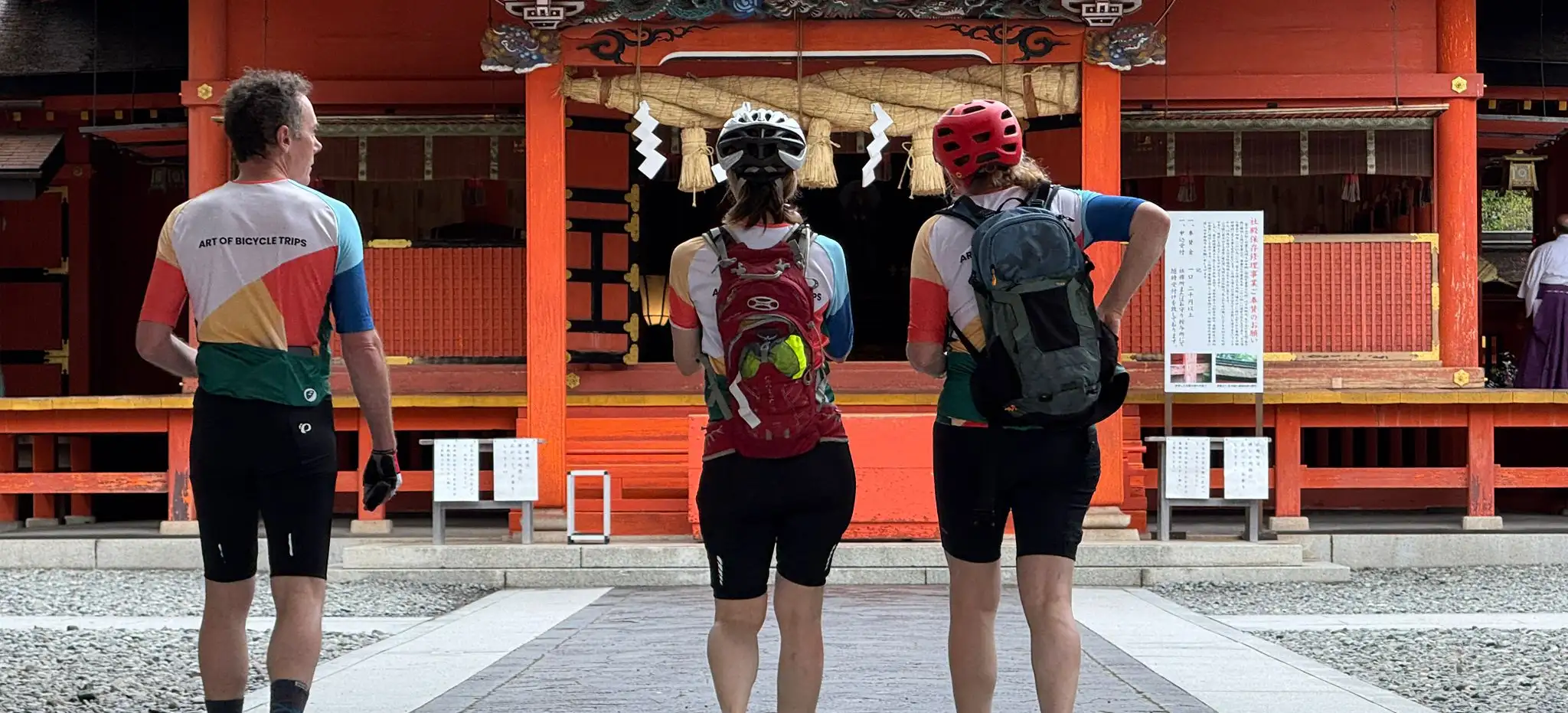
Day 2: Fujinomiya
We start the day with a ride to Yume Terrace, offering stunning views of Mt. Fuji on clear days. If the weather is cloudy, we’ll opt for a coastal detour, conserving energy for the climbs ahead.
Enjoy a scenic descent to the coast and cycle along the Miho Matsubara Pacific trail, stopping at Miho Matsubara, a serene pine grove steeped in legend.
A short and picturesque water taxi ride takes us across Shimizu Port before we continue our journey.
Our route includes a section of the historic Tokaido road, which connected Tokyo (formerly known as Edo) with Kyoto. This route was the most important of the 5 Japanese imperial highways of the Shogunate era. These were first built in the early 1600s by the Tokugawa Shoguns to exert control over the outer provinces, and for this reason were kept well-maintained throughout history. All five highways culminated in Nihonbashi, the central business district of Tokyo. Just as all roads led to Rome in ancient Europe, all roads led to Edo (Tokyo) in medieval Japan!
We pass through the well-preserved Yui and Satta Pass, known for their breathtaking views of the Fuji on one side,and the Pacific Ocean on the other. We’ll also stop at the Hiroshige Art Museum, where art enthusiasts can explore a collection of traditional Japanese masterpieces.
The day culminates with a challenging yet rewarding climb as we cycle towards Fujinomiya, bringing us closer to the iconic Mt. Fuji.

Day 3: Izu no Kuni
The day begins with a visit to Fujinomiya Sengen Shrine, a sacred Shinto site dedicated to Mt. Fuji. We get to experience the serenity of the shrine and fill our water bottles with pure spring water coming down from Mt Fuji itself.
A scenic ride takes us to the breathtaking Shiraito Falls, where cascading waters and stunning views create a picture-perfect setting.
The highlight of the day is the Fuji Skyline—a challenging ascent with thrilling switchbacks and spectacular panoramas. After conquering the climb, enjoy a rewarding descent to Izu no Kuni.


Day 4: Izu no Kuni
Today is a day filled with a cultural and culinary exploration blended with lessons in Japanese history.
The day begins with a peaceful walk along the Genbe River, renowned for its crystal-clear waters fed by Mt. Fuji’s springs and its inspiring conservation story.
Our cycling journey takes us through the picturesque landscapes of Izu no Kuni. We visit the Nirayama Reverberatory Furnaces, a set of 4 furnaces dating back to 1857 that are today recognized as UNESCO World Heritage Sites.
These furnaces were set up by the Tokugawa Shogunate to build canons in order to ward off the perceived threat to Japanese isolationism posed by increasing western presence on Japan's coast, such as the American naval expeditions led by Commodore Perry in the 19th century.
Izu no Kuni was also once a stronghold of several powerful Samurai families, the traditional Japanese warrior class. Several of their old houses have been well-preserved and are in good condition. We pay a visit to one such Samurai residence, and experience first hand the inner lives of these famed Japanese warriors.
Our adventure continues with a forest climb leading to one of Japan’s largest terraced wasabi farms. Here, we'll learn about the intricate art of wasabi cultivation from a local farmer, offering a deeper connection to this iconic Japanese ingredient.
Wasabi, also known as Japanese horseradish is a spicy condiment native to Japan. The special thing about wasabi is that it only grows in areas watered by clear, flowing mountain springs. This makes wasabi cultivation very intricate, and the supply of good quality wasabi very rare indeed.
We stay tonight at Kona Stay, a bike-friendly hotel where we can take our bikes to our room too, if we want. The hotel even has a small onsen or hot spring for guests to enjoy.

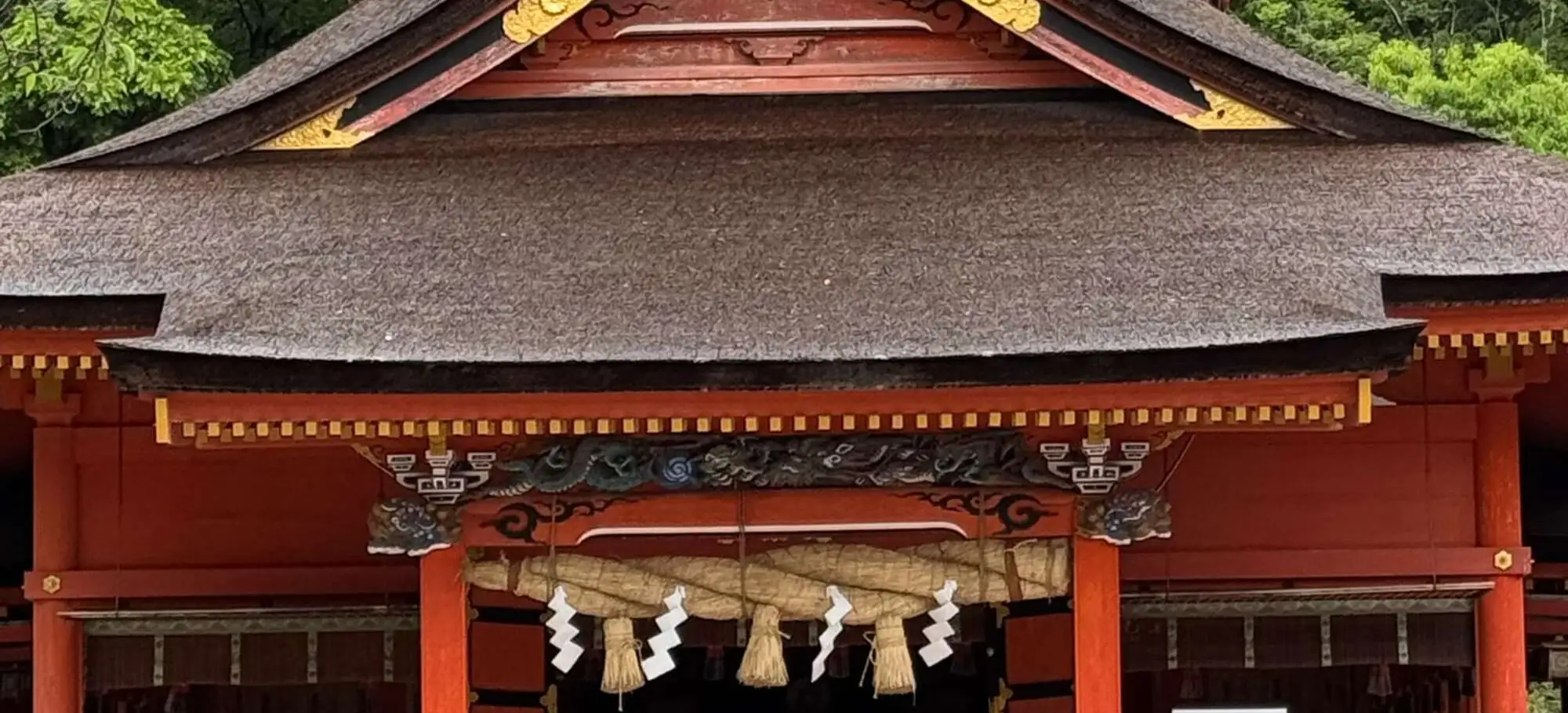
Day 5: Shimoda
Today, we trade bikes for hiking boots to descend upon the historic Shimoda Kaido path.
Our scenic 10km hike through Shimoda takes us through the Amagi Tunnel, lush forests, wasabi farms, and the stunning Nanadaru area, home to seven cascading waterfalls. The Amagi Tunnel, cut entirely out of the rocks of the Amagi mountains, was a central setting in the Nobel-prize winning Japanese novelist Yasanuri Kawabata's novella, The Dancing Girl of Izu.
After the hike, we transfer to the coastal town of Shimoda, stopping at the pristine white sands of Shirahama Beach.
Shimoda is a historic port town. It was at Shimoda that the American ships under Commodore Matthew Perry first landed, pressurizing Japan to open up for western trade for the first time in close to 250 years. Under the Tokugawa Shogunate, Japan had adopted a policy of isolationism from 1639 to 1853 in order to keep western influences such as Christianity at bay.
At Shimoda, Japan finally opened up.
The first American embassy in Japan was opened at Shimoda. The town was also the final resting place of several American sailors belonging to Commander Matthew Perry's expedition.
In Shimoda, a walking tour leads us through Perry Road, named after the very same Commodore Matthew S. Perry, and the charming old quarter, where the town's rich history comes alive in front of our eyes.
You’ll also have the chance to visit the Shimoda History Museum, enriching your understanding of this picturesque town’s cultural significance.

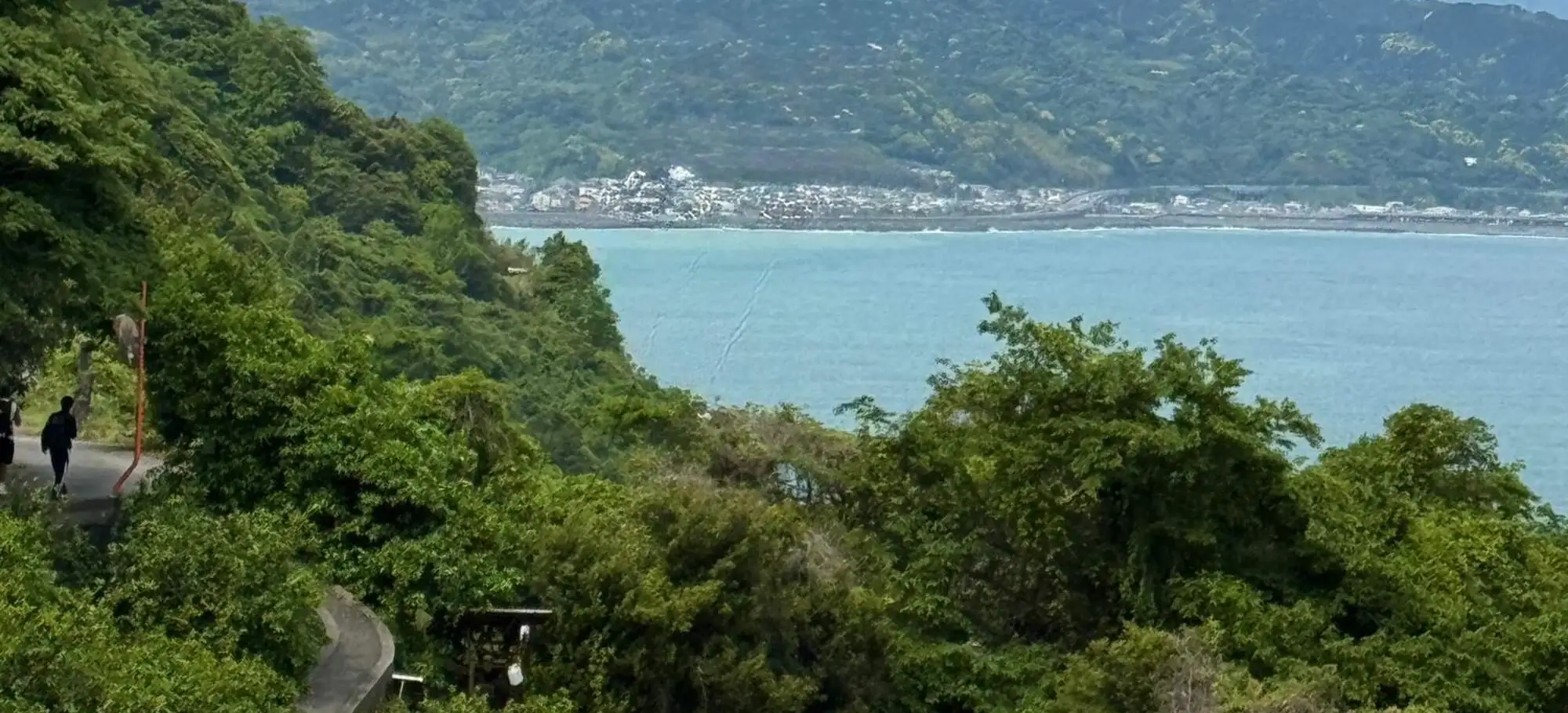
Day 6: Matsuzaki
Today, we cycle along the stunning south Izu coast, making stops at picturesque dunes and dramatic sea caves. Our journey leads us to Cape Irozaki, where we’ll walk to the Cape Irozaki Lighthouse and Shrine, offering breathtaking views of the surrounding coastline.
After a break for lunch at Cape Irozaki, we embark on a challenging ride to Matsuzaki. For those seeking an extra adventure, there’s an optional detour to the beautiful Ishibu rice terraces, adding another scenic layer to this exciting day.

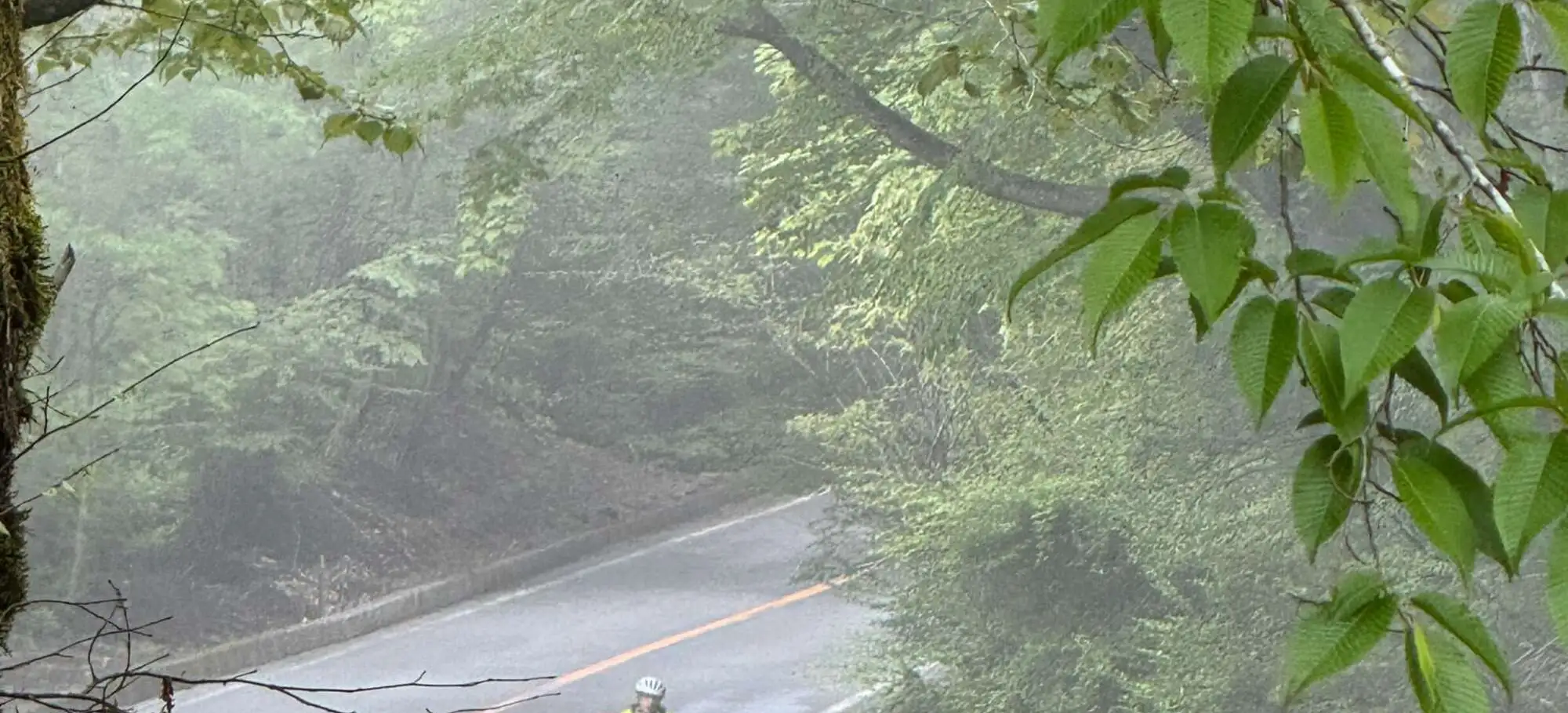
Day 7: Mishima
Start the day with a thrilling sea kayaking tour along the coast, exploring the serene waters and rugged coastline of the Suruga Bay. This 2 hour tour on highly stable fin pedal drive kayaks is a great way to experience the beauty of the Suruga Bay. Expect some more unexpectedly beautiful views of the Izu peninsula from here.
We have lunch around noon, following which the day’s adventure continues with a challenging ride up to the Nishina Pass Skyline Route, where you'll be rewarded with stunning views of Mt. Fuji (weather permitting).
The journey takes us via Shuzenji and later concludes at Mishima. Mishima is a place that holds a special place in the contemporary Japanese imagination. The mercurial Japanese writer and ultra-nationalist Yukio Mishima took his pen name from Mishima and Mt. Fuji.
Yukio in Japanese means snow.
Yukio Mishima was considered for the Nobel Prize in Literature 5 times, but never awarded one.
A passionate royalist, Mishima attempted a coup d'etat in 1970 in an attempt to reinstate the Emperor of Japan. When the coup failed, he committed suicide through the Japanese ritual of harakiri or seppuku in which Japanese Samurai warriors disembowel themselves with their sword or katana. He was all of 35 years of age at this time.

Day 8: Departure
After a memorable adventure, we’ll transfer to Mishima Station for your onward travel, bringing an end to this incredible journey through the Izu Peninsula.
Ready to plan your adventure? Download a print-ready detailed itinerary.
Map
Dates and Prices
Book with Confidence: Enjoy peace of mind — your 20% deposit is fully refundable up to 60 days before departure. See terms & conditions.
Single Supplement
From US $700
E-Bike Upgrade
From US $250
Couldn't find a trip with convenient dates?
Open your date as a join-in tour or customize further as a private one.
Essential Info
Inclusions
LODGING
All hotels as mentioned in the tour details or similar (subject to availability).
trip leader
Expert Trip Leader(s) who look after your every need and add meaning to your vacation.
bike
Immaculately maintained bike with helmet, suited to a terrain.
shuttle
A Van support follows the group of riders and carries all belongings.
meals
Meals as per itinerary. Guests are given the opportunity to dine on their own so that they discover a location independently.
refreshments
Refreshments and mineral water during activity.
entrance
Entrance fees to most of the monuments and temples.
Exclusions
Airport pickup
We recommend to book direclty from airport.
Airport drop
We recommend to book direclty from your last hotel.
Beverages
Beverages such as alcohol, tea, coffee, juice at a hotel or restaurant.
Gratuity
Gratuities for your guide team are not included in the trip price.
Bikes
A great ride begins with a great bike. Our tours typically include the models listed below, though in some cases—due to height or availability constraints—we may provide an equivalent alternative.
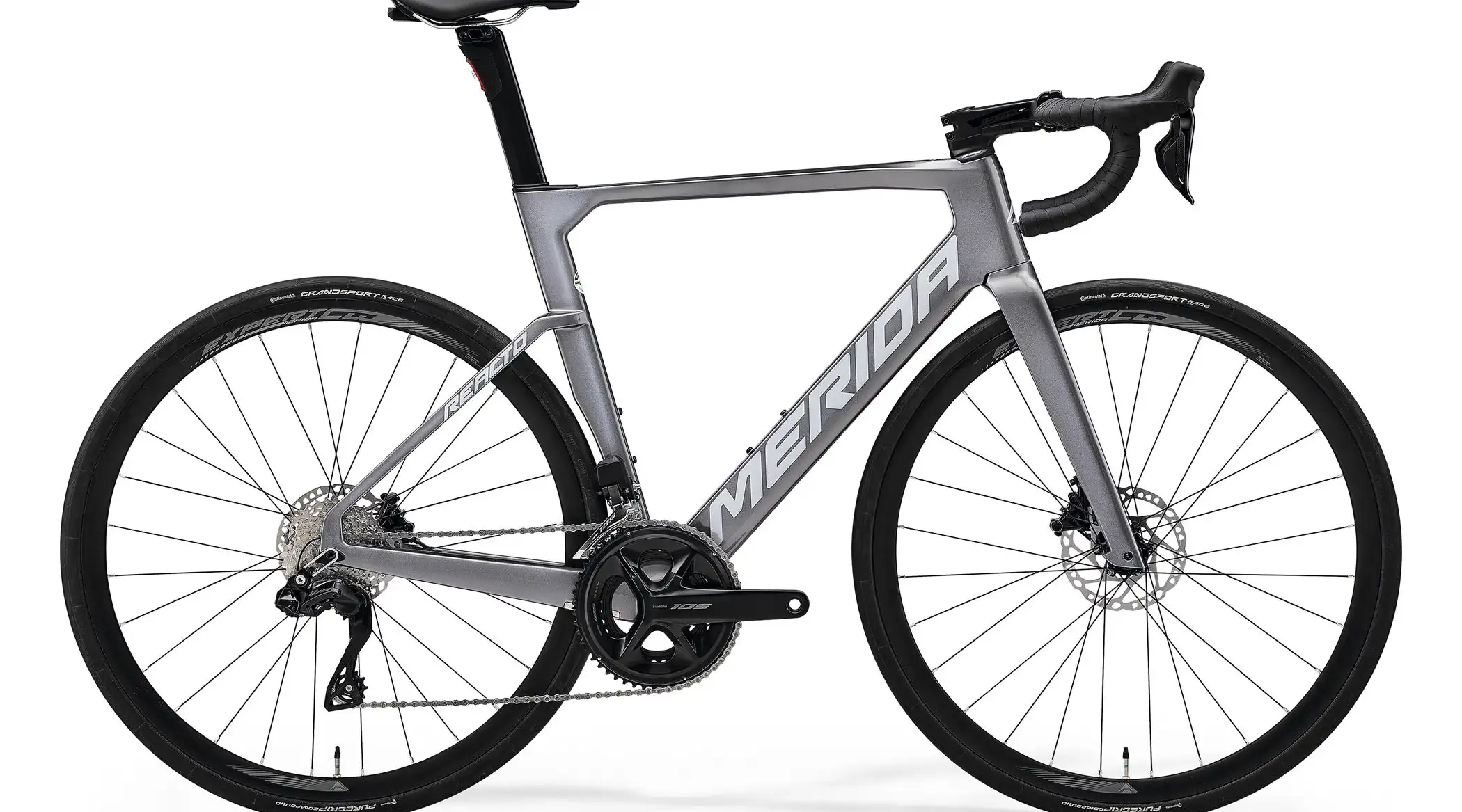
Merida Reacto 6000 or similar
Included in your trip price

Miyata Cruise i6180 or similar
Available at a surcharge
What to Expect
We want you to have a fantastic experience on your tour, so we aim to be upfront about what to expect along the way. Here are key details to keep in mind:
Accommodation:
Most of the hotels in Japan offer a mix of Japanese inns (Ryokans) and Western-style rooms. It is important to note that room assignments are subject to availability and beyond our control.
Japan is renowned for its rich cultural heritage, and two quintessential elements of this heritage are onsen and ryokans. Onsen refers to natural hot springs, which hold cultural, historical, and spiritual significance for the Japanese people. Ryokans, on the other hand, are traditional Japanese inns that offer a unique and immersive experience into the country's customs and way of life. Together, onsen and ryokans provide travelers with an opportunity to indulge in relaxation, rejuvenation, and a deep connection with Japan's past.
The combination of onsen and ryokans creates a unique travel experience that perfectly encapsulates the essence of Japan. Guests at ryokans often have access to private or communal onsen baths, allowing you to soak in the therapeutic waters while enjoying the surrounding natural beauty.
Japanese-style (Ryokans) rooms offer a unique local experience and are quite popular. They add a distinctive cultural touch to the tour. In Japan, taking public onsen hot spring in the hotel is so popular, so even nice beautiful hotels most time has rooms only with toilet.
Hence, for hotels lacking en suite bathrooms, guests are expected to utilize the communal bathing facilities.
Furthermore, depending on the hotel style, when double rooms are requested, we may only be able to secure twin rooms due to the limited availability of double beds in many Japanese hotels.
Dietary Preferences
While we do our utmost to accommodate all dietary requirements, please note that vegan and gluten-free options can be limited in some regions. We will certainly make every effort to cater to your preferences, but we recommend that guests carry some essential vegan or gluten-free staples as a backup to ensure their needs are fully met. Additionally, we encourage you to inform our guide at the start of the trip; they will be happy to assist you in sourcing suitable supplies from local grocery stores in larger towns whenever possible.
E-Bike Regulations in Japan
In accordance with Japanese regulations, e-bikes provide pedal-assist support only up to a speed of 24 km/h (15 mph). Beyond this limit, the motor will no longer offer assistance, and you’ll continue riding under your own power. This ensures a safe and enjoyable experience while complying with local laws.
Arrival & Departure Details
Arrival Details
Arrive at the Narita International Airport and Tokyo and take the JR Tokaido Shinkansen (bullet train) to Shizuoka station. The Shinkansen takes around 1 hour 20 minutes to reach Shizuoka.
Departure Details
We transfer on Day 8 to the Mishima station. Mishima is on the JR Central Tokaido Shinkansen line and the Tokaido Main Line and is well-connected to major cities. It takes a little over an hour on the Shinkansen to travel from Mishima to Tokyo.
Weather
The best time to cycle Shizuoka is Spring (April-May) and Fall ( Oct-Nov ).
During spring, the weather is mild with low rainfall. The cherry blossoms are in full bloom and the land is green. Daytime temperatures vary between 20 to 23C°C ( 68 to 73.4°F).
Autumn is cool and sunny with the stunning fall foliage adding vivid splashes of color to the landscape. Temperature ranges are similar to those in the spring.
February can be cold with daytime temperatures of around 12°C (53.6°F) and nighttime temperatures dropping close to the freezing point. However, the weather is still sunny, and the plum blossoms begin to bloom, adding to the scenery.
June marks the arrival of the rainy season, bringing frequent rain showers, but not persistent rain. However, there are still some warm and pleasant days in between showers.
Come September and the frequent rains give way to typhoons. However, at the same time, the temperature and humidity start to drop in the second half. Some good days for cycling emerge later in the month.
January
Offseason
February
Mixed
March
Good
April
Best
May
Best
June
Mixed
July
Offseason
August
Offseason
September
Mixed
October
Best
November
Best
December
Good
Best
Good
Mixed
Offseason
What to Pack
Packing smart is essential for a safe and enjoyable cycling adventure. From essential biking gear to clothing and travel necessities, this guide ensures you're prepared for any terrain or climate.
Recommended Bicycling Clothes & Gear
- Bicycling shoes or stiff-soled sneakers.
- Padded cycling shorts.
- Short-fingered cycling gloves (personal gloves are ideal).
- Brightly colored cycling jerseys or synthetic T-shirts for visibility.
- Synthetic cycling socks.
- Sunglasses with UV protection.
- Personal helmet (recommended even though provided).
- Personal saddle (optional for added comfort).
- Rain jacket or windbreaker.
- Cycling water bottle (to reduce plastic waste).
Note: Helmets, gloves, and water bottles are personal items, so bringing your own is recommended for maximum comfort and hygiene.
Clothing
- Light, breathable fabrics like cotton or linen.
- Full-sleeved clothing for sun protection.
- Warm layers for chilly mornings and evenings (if traveling in winter).
- Comfortable footwear for non-cycling time.
- Bring a compact rain jacket in case of sudden weather changes.
- Ethnic or modest clothing for exploring towns and temples.
Other Necessities
- Toiletries: Basic hygiene essentials, including insect/mosquito repellent and sunscreen.
- Hand sanitizer and wet wipes.
- Plug socket adaptor.
- Binoculars for wildlife spotting or desert landscapes.
Pro Tips
- Pack light but plan for the varying temperatures: warm days, chilly evenings, and desert winds.
- Use brightly colored clothing for visibility on roads.
- Pack light to leave room for shopping.
Luggage
Please limit your luggage to one medium-sized suitcase and one carry-on bag. Mark your luggage with your name, address, and phone number.
Visa Information
Before venturing on your adventure, make sure you're equipped with essential travel advice, including security updates, local laws, and crucial passport and visa information. Start by visiting the official government website of your home country for accurate and reliable guidance:
- UK Residents: Stay informed by reviewing the Foreign, Commonwealth & Development Office (FCDO) Travel Advice.
- US Residents: Access vital travel tips and updates through the US Department of State Travel Advice.
- Australian Residents: Plan ahead with the latest updates on the Smart Traveller website.
- Canadian Residents: Find comprehensive travel and visa guidance on the Government of Canada's Travel Advice and Advisories.
- New Zealand Residents: Get practical travel advice on the New Zealand SafeTravel website
- Residents of Other Countries: Check with your government or local consulate for tailored travel advice and requirements.
Note: Passport and visa regulations can change at any time. Stay proactive by checking for the latest updates to ensure a smooth and stress-free journey.
Insurance
Medical insurance that covers medical costs in case of an accident during the trip is mandatory to participate in our tours.
We recommend to purchase adequate travel insurance in order to participate in our tours and protect yourself from unforeseen events. Our experience shows that guests who purchase travel insurance—including coverage for all activities on the itinerary, trip cancellation, interruption, delay, baggage damage, loss or theft, personal accident, death and repatriation costs, medical and emergency expenses (including Covid-19), and personal liability—travel with greater peace of mind.
Can I use my credit card insurance?
Yes, as long as it meets our requirements and provides adequate coverage. Ensure you have an emergency contact number and policy number available.
When should I buy travel insurance?
Purchase travel insurance as soon as you've paid in full or booked your flights.
Is proof of travel insurance required?
Yes. You must provide your insurer's name, policy number, and emergency contact via our reservation form. This is mandatory. If you cannot provide proof, you’ll need to purchase insurance before traveling with us.
Does Art of Bicycle Trips sell travel insurance?
We do not sell travel insurance directly, as we believe our customers should have the freedom to choose a policy that best suits their needs. However, we recommend Insured Nomads as a great starting point.
Frequently Asked Questions
A guided bike tour includes a professional local guide who rides with you throughout the trip. The guide handles navigation, manages daily logistics, ensures safety, and shares cultural insights. In addition to the guide, you also have a support vehicle that transfers luggage, provides water/snacks, and offers on-route assistance or a lift whenever needed. You simply follow the guide and enjoy a fully supported experience.
Your guides are local cycling experts, fluent in English, with deep knowledge of the region’s history, culture, and food.
On our guided tours, we ensure you begin your ride feeling comfortable and well-supported. Your guide and local team play an active role in getting your bike properly set up.
Before Your Tour
When you book, we ask for your height. This allows our local partners to select the correct frame size and prepare the bike in advance so it’s close to your ideal fit when you arrive.
At the Start of the Tour
You’ll receive a full in-person bike fitting with your guide or local representative. This typically includes:
- Adjusting saddle height
- Moving the saddle fore–aft (small adjustments to move the saddle forward or back for better balance and comfort)
- Fine-tuning handlebar height and reach (where adjustable)
- Confirming pedal preference — flat pedals are provided by default. If you bring your own clip-in pedals, our guide will help install and adjust them
- A short test ride to check comfort
Your guide will ensure everything feels right before the tour begins.
During the Tour
Throughout the trip, your guide will make additional adjustments whenever needed. This is especially helpful if you discover new comfort preferences after a few hours of riding.
What to Expect
Our guided tour bike fitting is hands-on, comfort-focused, and practical, ensuring you ride safely and enjoyably each day. It’s not a detailed workshop-level fit, but it covers all essential adjustments for multi-day touring.
Our support vehicle is always close by to make your ride worry-free. It carries your luggage, water, snacks, and spare parts, and is there if you need a quick lift or just want to rest for a while. You’ll see it at regular intervals along the route and during meal or refreshment stops. The vehicle is also used for scheduled transfers and to ensure safety and comfort along the route.
For guided tours, we do not provide GPX files separately, as navigation is handled by your guide. On certain occasions, if you prefer more independence, we may offer app-based navigation access with the daily routes loaded. However, please understand that this may not always be possible and depends on the specific tour setup.
Airport transfers are not included unless specifically mentioned in your trip inclusions.
For airport pickup, we recommend booking directly from the airport upon arrival — most airports have reliable taxi, shuttle, or app-based options.
For airport drop, please book a transfer through your last hotel — they can easily arrange it for you.
We focus on delivering exceptional experiences during your tour. For logistical simplicity and flexibility, we do not handle pre- or post-tour hotel bookings. However, we’re happy to share a list of recommended hotels near the starting and ending points of your trip so you can plan your stay independently.
The fitness level required for each trip is indicated by the "level" of the tour, which in turn is mentioned on each tour page right next to the price and the trip duration.
Easy: The terrain is mostly flat with a few gentle climbs.
Moderate: The terrain is either mostly flat or consists of rolling hills with a few challenging climbs. There could also be a few days with longer riding distances of up to 75 kms (45 miles)
Difficult: The terrain is mostly hilly with strong elevation gains and/or has long days on the bike. Such trips are recommended for intermediate to advanced cyclists.
Please note that we usually bike around 4-5 hours per day irrespective of the level of the trip.
Our tours in Japan feature a mix of traditional Japanese inns (ryokans) and Western-style hotels. Room assignments are subject to availability and may vary from place to place.
Japan’s cultural heritage is beautifully reflected in its onsen (natural hot springs) and ryokans. Staying in a ryokan offers an immersive experience, with tatami-mat rooms, traditional décor, and access to communal or private hot spring baths. Onsens are an important part of Japanese culture, valued for relaxation, healing, and their historical significance.
Please note that:
- Ryokan rooms often do not have en suite showers or baths. Even in upscale properties, many rooms include only a toilet, with guests expected to use the communal onsen bathing facilities.
- Double beds are limited in many Japanese hotels. When double rooms are requested, we may only be able to secure twin rooms depending on availability.
Ryokans and onsens add a unique and memorable cultural dimension to your trip, offering an authentic and restorative Japanese experience.
Yes, please communicate your dietary preferences to your trip leader and they'll ensure that the food you eat is as per your requirements.
Yes — we do our best to support all dietary requirements. However, please note that vegan and gluten-free options can be limited in certain regions of Japan, especially in smaller towns. We will make every effort to cater to your needs, but we strongly recommend bringing a few essential vegan or gluten-free staples as a backup.
At the start of your trip, please inform your guide of your dietary preferences. They will be happy to help you identify suitable meals and assist in sourcing appropriate supplies from local grocery stores in larger towns whenever possible.
Most of this trip is on double-lane paved tarmac roads with very less traffic.
We've designed this itinerary such that most of the cycling happens on quieter countryside roads far from busy traffic. The shuttle transfers on this tour have been strategically planned to bypass busy vehicular traffic.
While your tour price covers most common expenses, a few meals not included in the itinerary may require additional spending. As a general guideline, you can budget approximately US $25 per person per day for these extra expenditures.
Tips are not included in your tour price.
As a general rule, you may tip US$ 15-25 per person per day.
This figure is for the entire crew including the trip leader, the driver, and other support staff.
However, you are not obligated to tip, and you can always tip less or more than the above amount depending on the level of service you received on tour.
It is usually the norm to tip the tour guide, who then distributes the amount among the entire crew. However, you can also tip each individual member of the crew if you so desire.
In case you want to tip the staff at a hotel such as porters, you may pay them US $2-3 per day.
You can exchange currency at the currency exchange kiosks in Japanese airports, or you can use your credit card at ATMs at convenience stores such as 7/11 in major Japanese cities to withdraw JPY. Many Japanese commercial establishments still prefer cash, so its good to have some local currency with you when cycling in Japan.
Yes, you may wear riding shorts while riding your bike. When not cycling, it would be advisable to wear comfortable full-length pants. We recommend keeping a pair of comfortable pants handy in you support van.
When visiting temples and monuments, visitors should wear full-length, loose-fitting pants. Holy places of certain religions may also require covering your head. Your guide will inform of the dress etiquette required for visiting specific religious places.
The meeting time on Day 1 is mentioned in your travel planner shared with you. You can arrive either on the morning of Day 1 depending on the meeting time, or book a pre-tour night to arrive a day earlier.
We don't have anything planned for the last day, so you are free to depart at your discretion.
Reviews from our friends
You may also like
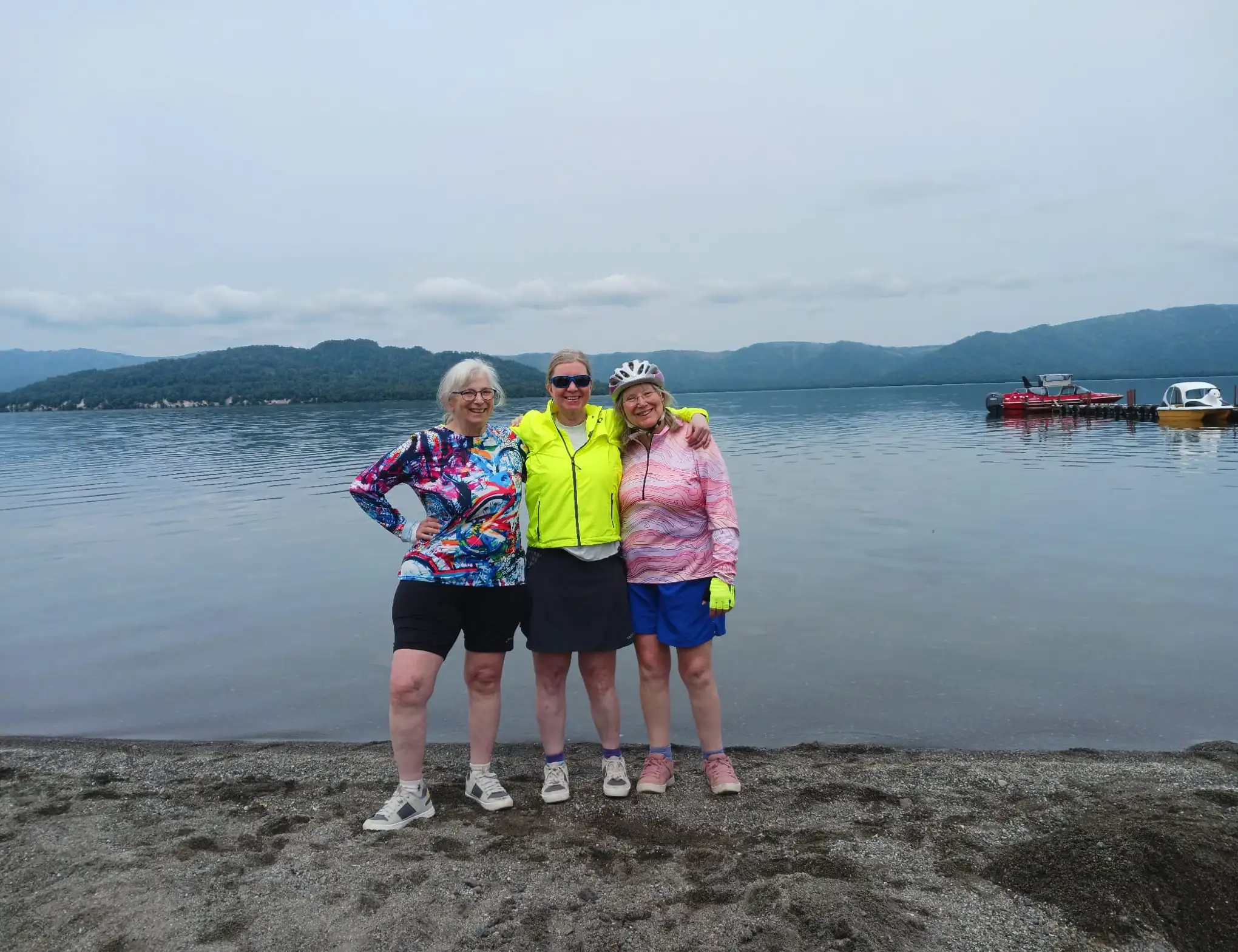
Popular
Guided Off-Beat Eastern Hokkaido Bike Tour
8 daysfrom$4,995/person

Popular
Guided Kyoto to Sea of Japan Bike Tour
8 daysfrom$4,595/person

Popular
Guided Essence of Shikoku Bike Tour
8 daysfrom$4,395/person

